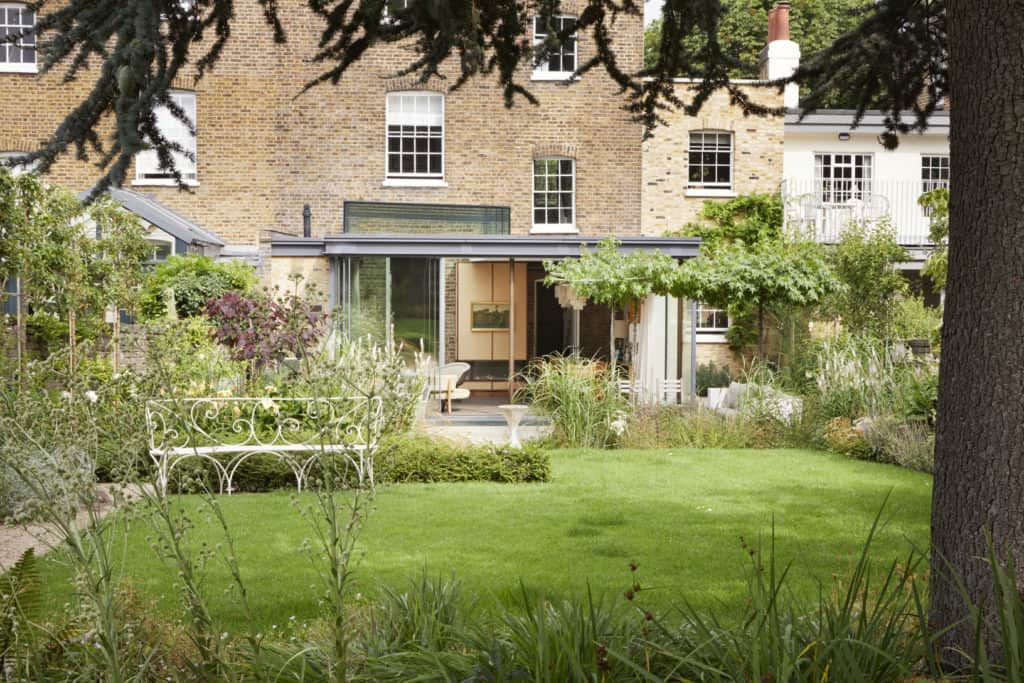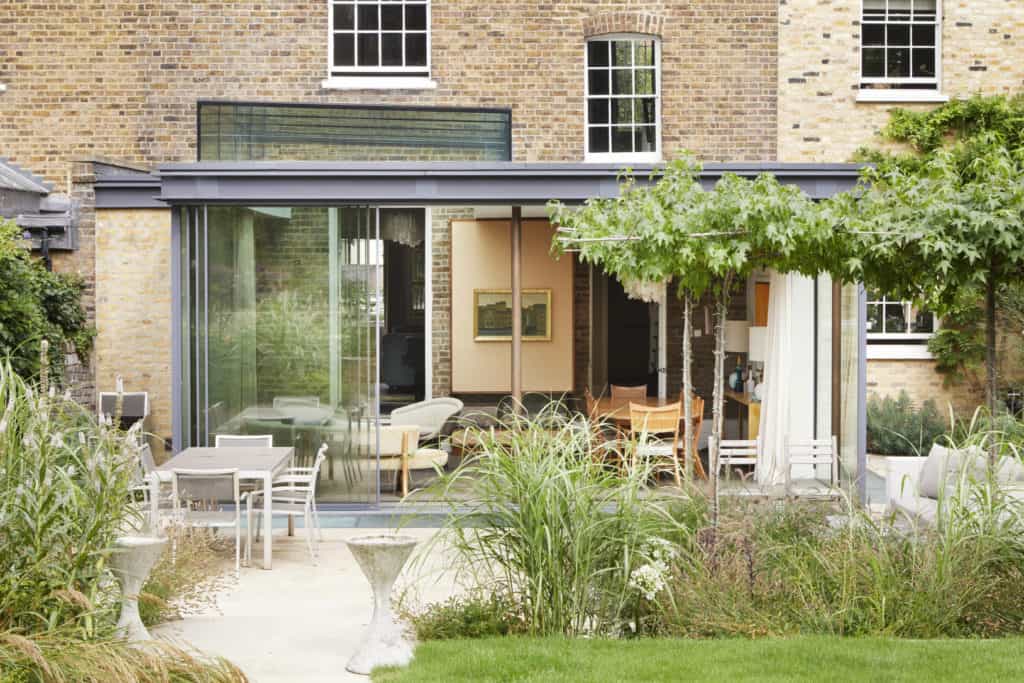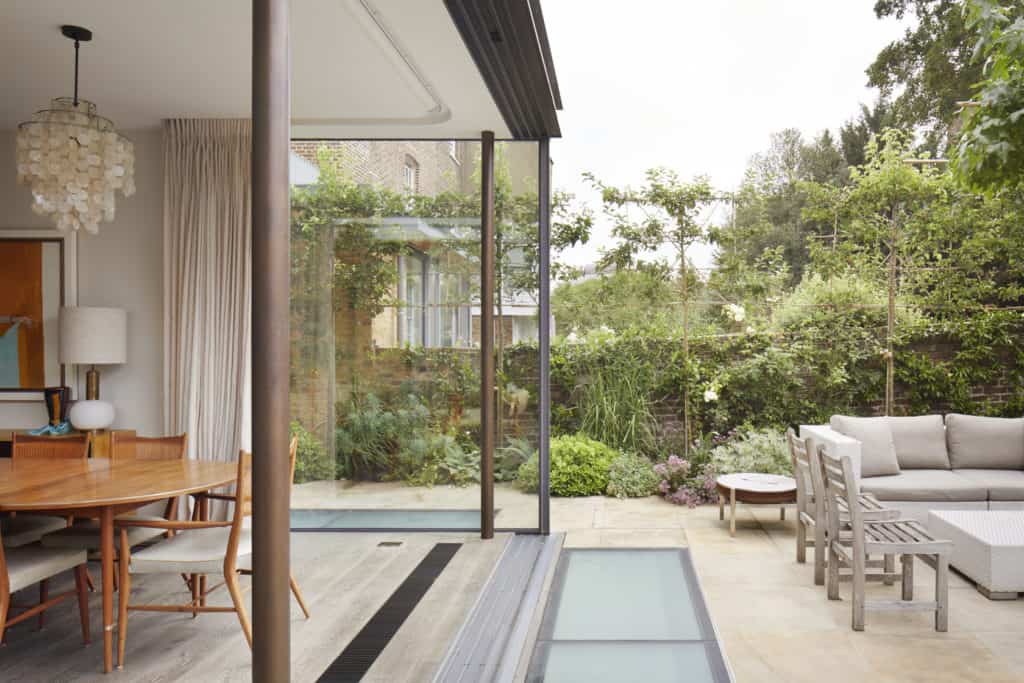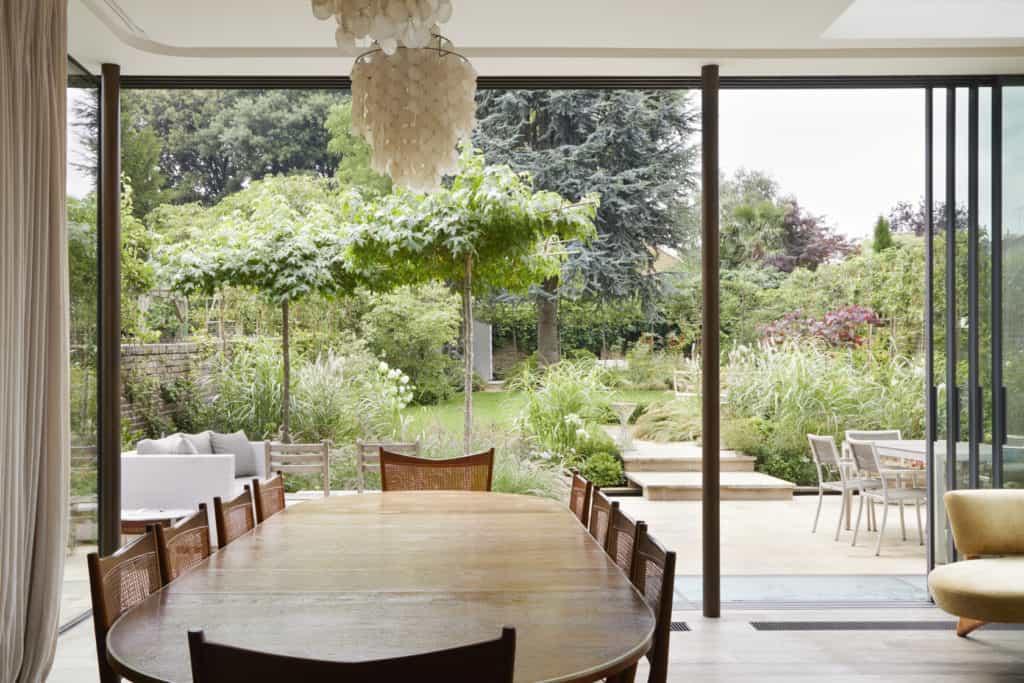BLOG
INTERESTING STUFF
THAT CAUGHT OUR EYE
Guest Expert: How Emma Griffin Creates a Garden Paradise

A lifelong lover of gardens, Emma Griffin has been designing gardens since the 90s and now runs her own garden design practice. She is responsible for the bountiful yet calming garden in Richmond Hill, pictured on this page.
Hard landscaping versus soft landscaping
I’m a strong believer that gardens should be used as gardens.
Hard materials are the backbone of the garden, but they shouldn’t be overstated. Your interest should always be focused on the plants; they’re what provide colour and texture, while the hard landscaping should draw the eye to focal points in the garden and frame the plants.
Hard landscaping also determines what types of plants are appropriate. You would expect a water feature to be surrounded by reeds, an old brick wall to be complemented by climbers and creepers, while a garden path may be lined with grasses and flowers.
Plants are also perfectly capable of creating structures themselves. Canopies, walls and paths can all be created through planting rather than with stone, wood or metal.
Wherever possible I try to use plants to create shape and structure, as their soft outline is more pleasing to the eye than hard edges. Recent advances in green walls allow the line between hard and soft landscaping to be blurred even further, softening typically solid structures.

Working with the site
I can draw the most beautiful garden design on paper, but there’s no telling what will work in the real world without first investigating a range of factors throughout the garden.
Soil type, sunlight and shelter can all vary significantly from one section of the garden from the next. Any existing plants that are being kept determine what can be planted around them, and many plants simply don’t get along.
While we can prune trees and shrubs to reduce shade, we can’t change the position of the sun. What plants will thrive and how you use the space is determined by how the garden is lit through the day and the year.
There’s little sense in building your perfect outdoor dining space if it’s going to be sitting in the dark during the hours that you want to use it.
There’s an awful lot to keep track of when designing a garden, and it’s a lifelong learning curve.

Gardens start in the imagination
One of the biggest challenges in garden design is the sheer number of available plants – many times more than I will ever work with in my lifetime. Plants are the world’s biggest catalogue.
Some clients have a clear list of plants they want featured, while others don’t know anything beyond daffodils and roses. But what everyone does have is an emotional connection to certain shapes, scenes or even smells that plants can create, and drawing that out is key to successful garden design.
Some clients want plants that catalogue their travels around the world, while others want to create a quintessentially British garden. Gardens from childhood are a common source of inspiration, one that is true for me personally.
Many people also have ethical concerns when it comes to gardening. Whether to use British plants or imported plants, leave sections of the garden wild or introduce bee-friendly pollinators are all regular concerns for my clients.

Gardens are a long term investment
Unlike architects, whose involvement in a home has a more clearly defined end point, garden designers can remain involved for many years after the project has completed.
Gardens are living, evolving things that need to be nurtured. Along with the garden design, I provide management plans for how the garden is to be looked after long term by the client or their gardener.
Typically, I stay in regular contact with clients for a couple of years before handing over the reins, but my longest ongoing contract has been running for over seven years.
This long term view extends to the design of the garden too. I need to consider how plants are going to change over time and interact with one another. A garden two years after its initial planting can look dramatically different.
They’re a long term investment, but one that’s worth it, and the more you give to a garden, the more it will give back.
If you have any questions about garden design or want to know more about my services, feel free to visit my website at www.emmagriffingardens.com or get in touch at emma@emmagriffingardens.com.
Emma Griffin

